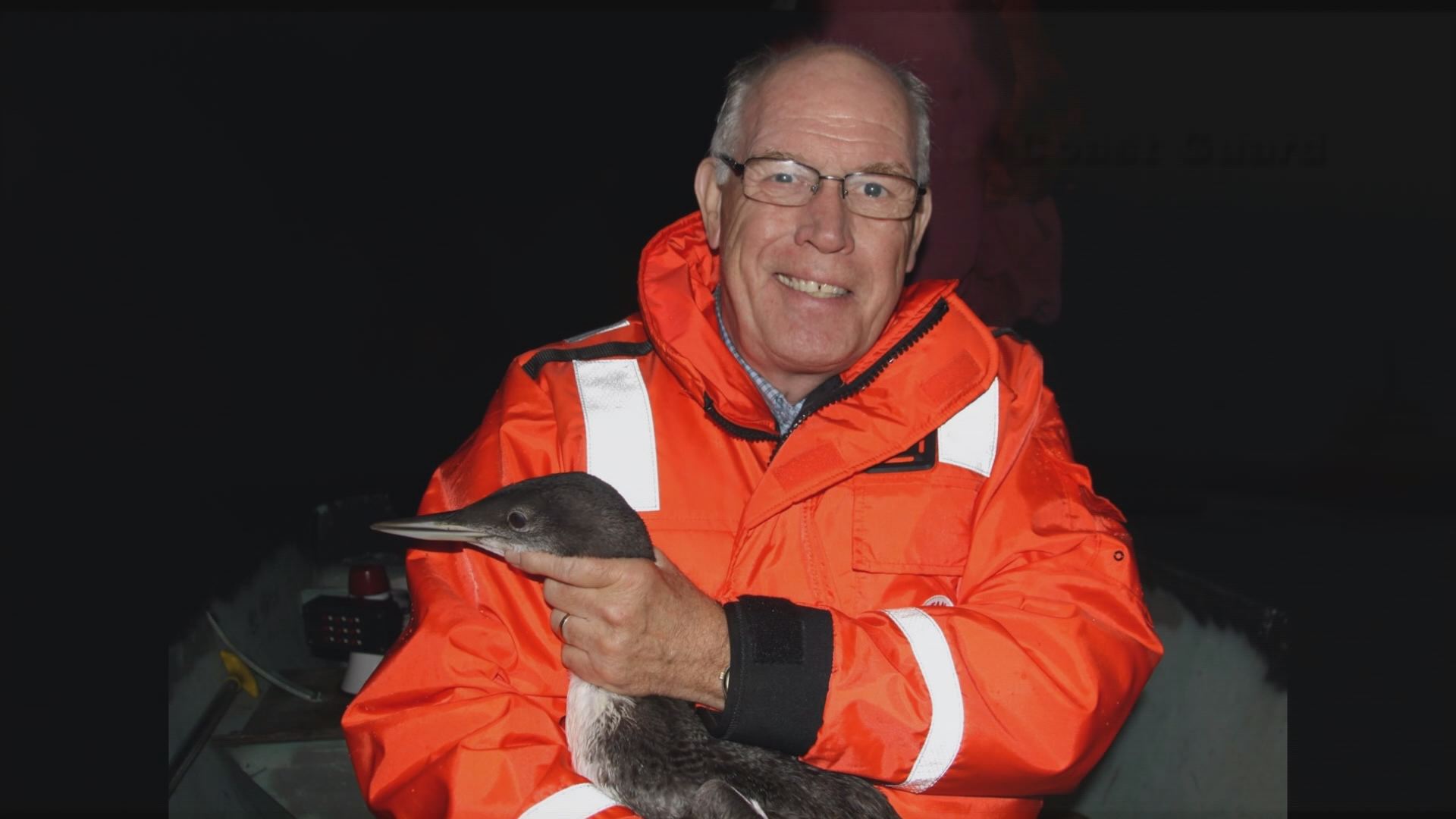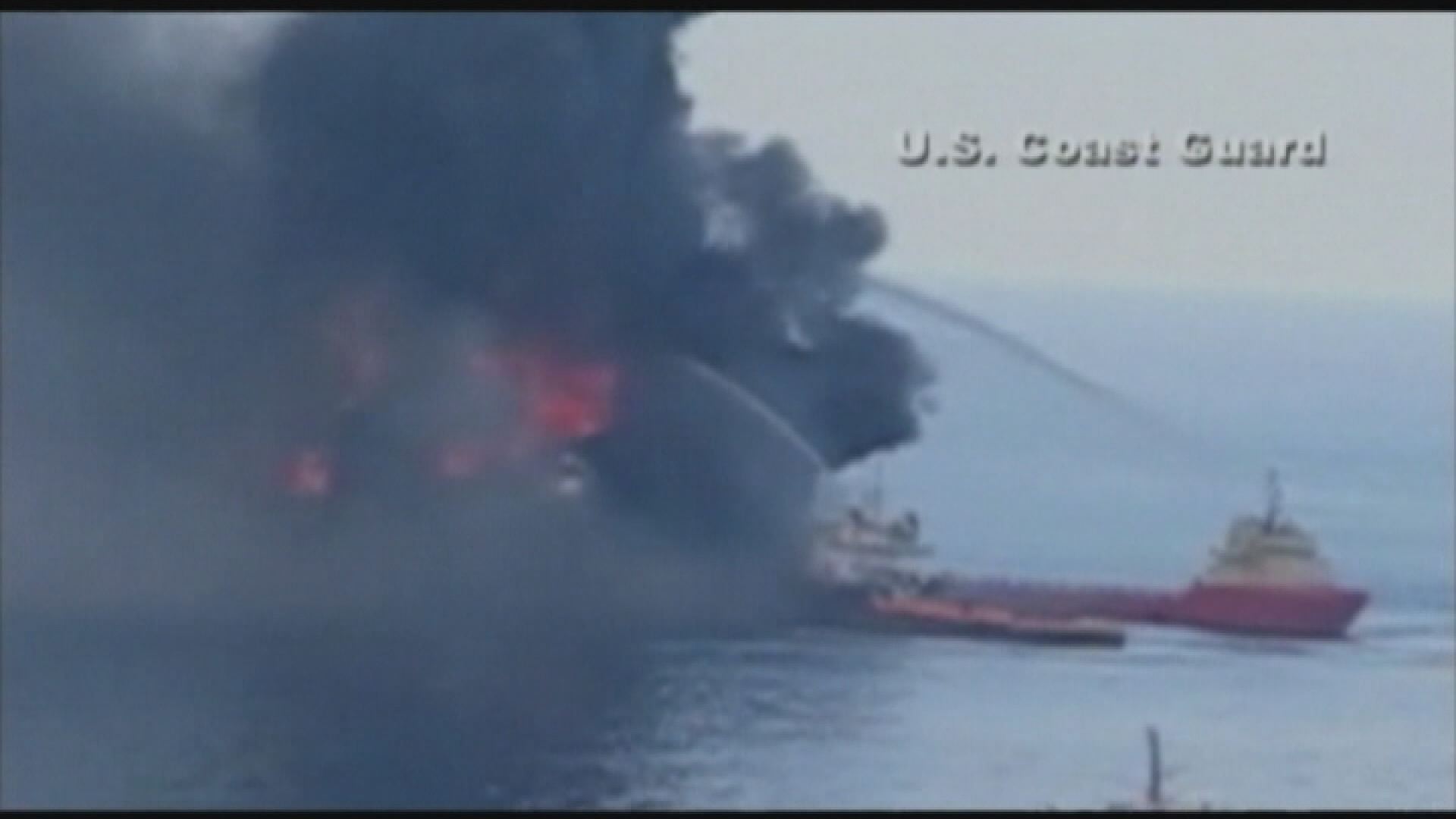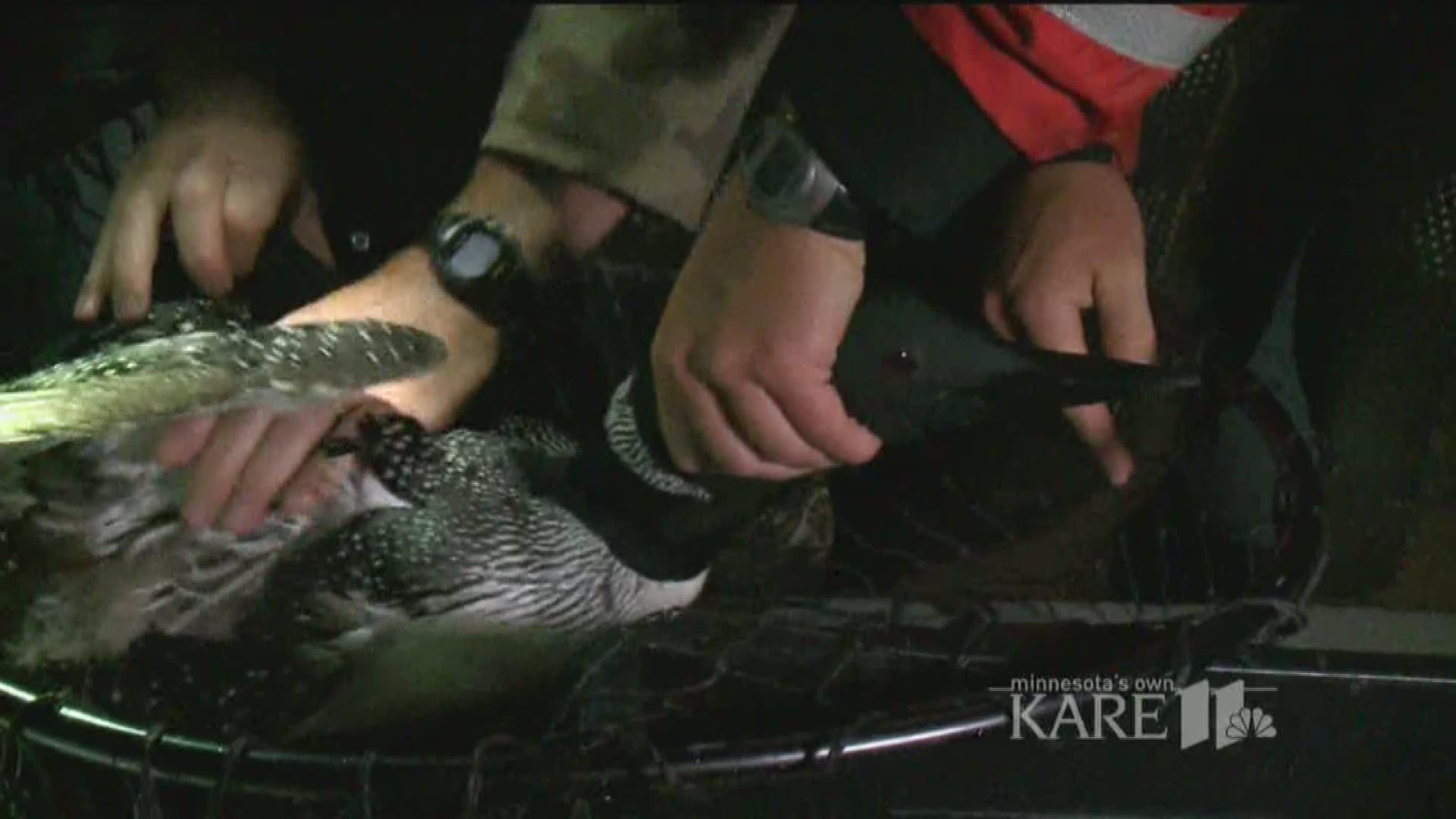CROW WING COUNTY, Minn. – On a moonlit July night when most have heeded the loon’s call and headed for shore, three guys board a boat on Rush-Hen Lake in the Whitefish Chain in search of a Minnesota treasure.
“Looks like things are getting dark enough,” says Kevin Kenow, research wildlife biologist with the U.S. Geological Survey.
Kenow and his two-man crew usually fish at night for Minnesota’s state bird in hopes of shedding more light on the common loon’s life, including some of the hazards it faces such as the 2010 Deepwater Horizon oil spill.
“They’re here for maybe five or six months of the year, but a whole other half of the year, they’re exposed to issues during migration and while on the wintering ground,” Kenow says.

Loon capture
On this night, Kenow’s boat quickly finds the desired loon family in its territory.
Shining a light on the male, the boat makes a slow, deliberate move toward the bird, who stays on the surface to protect his young.
With a chorus of calls and a splash, the loon escapes the net.
The boat swings around for a second run, and this time, the crew catches the loon.
The loon struggles and makes muffled calls in the firm but careful hands of Kenow and a crew member, who free the bird from the net and load it into a container.
“This technique’s been used for years, and we’ve never had an injury related to the capture,” Kenow says.
After a short trip to shore, Kenow and his crew begin collecting data.
Kenow has captured this loon, which also wears an geolocator tag, three times in the last year.
“I looked at the data, the data I downloaded last month, and this bird had been in the Gulf of Mexico last winter,” Kenow says.

Loons and Deepwater Horizon Oil spill
Knowing the loon has been to the Gulf is important.
The Minnesota Department of Natural Resources has used Kenow’s work to analyze the impact of the 2010 Deepwater Horizon oil spill.
“First we documented the fact that the loons were indeed wintering in areas affected by the oil spill, and with the geolocators, we determined the loons were feeding on the bottom of the Gulf, which is where the oil would have settled,” says Carrol Henderson, Minnesota DNR.
Kenow also samples the loon’s blood, and the DNR has found a third of the samples show petroleum. Beyond that, Henderson has found evidence in unhatched eggs and dead loons from a problem more than a thousand miles away from central Minnesota.
“We determined that, yes, indeed, the loons were picking up contamination in the Gulf – both petroleum contaminants and dispersant contaminants,” says Henderson.
With the findings, Henderson plans to seek oil spill settlement funds, in part, to protect the loon’s Minnesota habitat on cold, deep water lakes like some in the Whitefish Chain.
As part of his work, Kenow uses fecal samples to try to determine what the loons eat in those deep water lakes, specifically, cisco fish.
“I think it might highlight the importance of these deep water, cisco lakes, and understand that it’s important to conserve these lakes,” Kenow says.
Loon back home
The U.S.G.S crew has the loon back in its territory in about an hour.
Kenow observes, “Now the two adults are calling back and forth – kind of relocating each other.”
This night is young, and the crew has many more all-nighters seeking Minnesota’s treasure.
“Kind of an iconic symbol of northern lakes and wilderness,” Kenow says.

